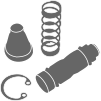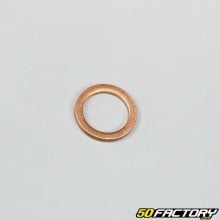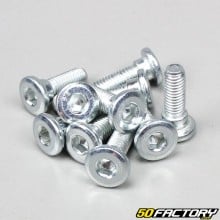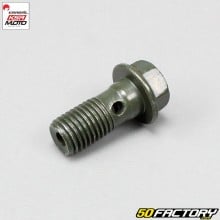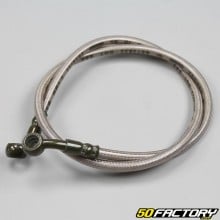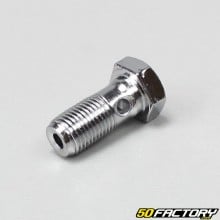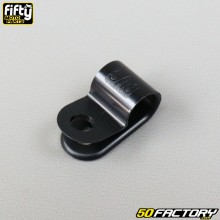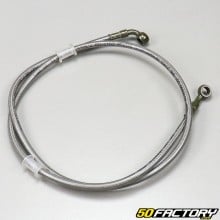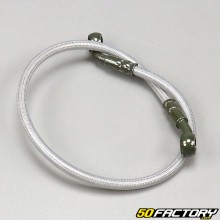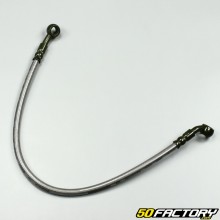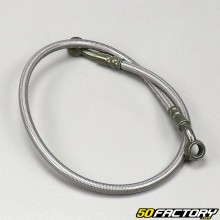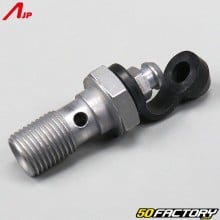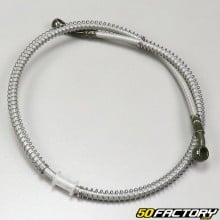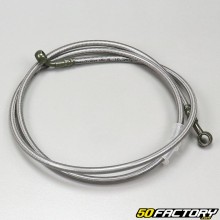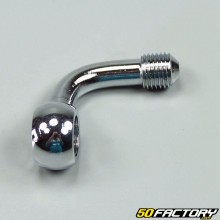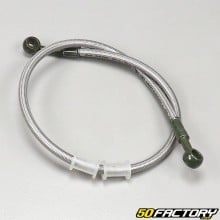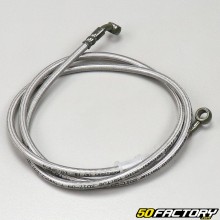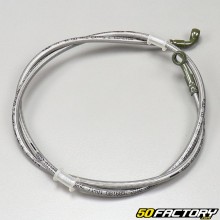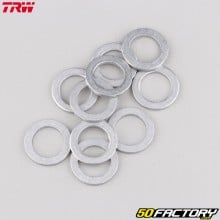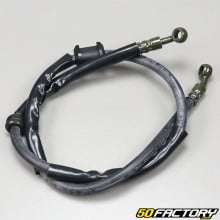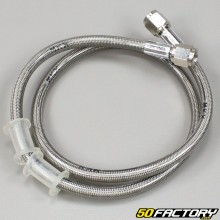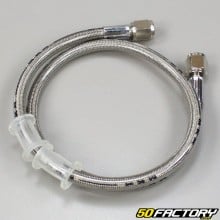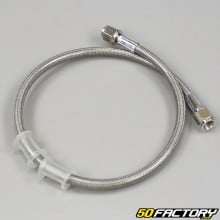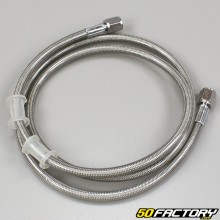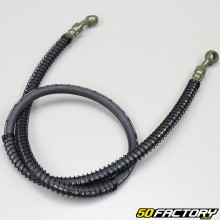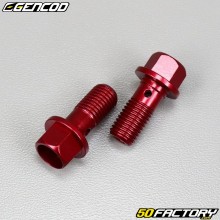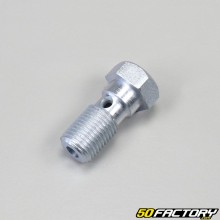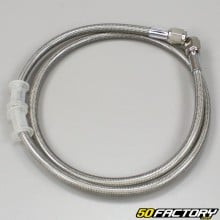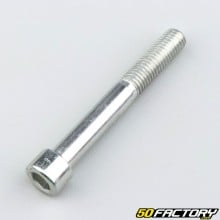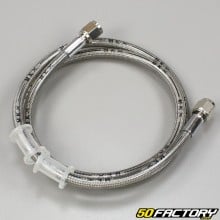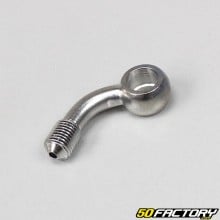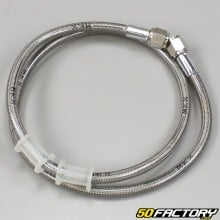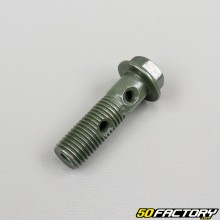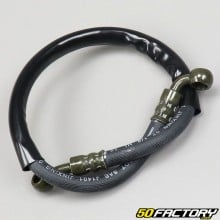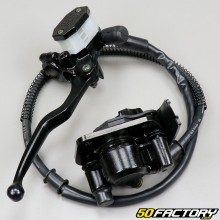 Brake hose and support
Brake hose and support
- IN STOCK1,10 €
- IN STOCK14,30 €
- IN STOCK8,10 €
- IN STOCK1,10 €
- IN STOCK13,30 €
- IN STOCK3,30 €
- IN STOCK2,00 €
- IN STOCK14,50 €
- IN STOCK9,70 €
- IN STOCK10,60 €
- IN STOCK10,20 €
- IN STOCK23,50 €
- IN STOCK14,60 €
- IN STOCK18,30 €
- IN STOCK4,10 €
- IN STOCK11,00 €
- IN STOCK4,00 €
- IN STOCK18,00 €
- IN STOCK14,00 €
- IN STOCK5,20 €
- IN STOCK4,00 €
- IN STOCK4,00 €
- IN STOCK4,00 €
- IN STOCK17,40 €
- IN STOCK18,90 €
- IN STOCK4,00 €
- STOCK EXHAUSTED16,90 €
- STOCK EXHAUSTED16,90 €
- IN STOCK23,90 €
- IN STOCK10,80 €
- IN STOCK3,60 €
- STOCK EXHAUSTED3,30 €
- IN STOCK19,90 €
- IN STOCK1,50 €
- IN STOCK19,90 €
- IN STOCK0,80 €
- IN STOCK4,00 €
- IN STOCK18,90 €
- IN STOCK2,50 €
- IN STOCK5,80 €
- IN STOCK15,40 €
- STOCK EXHAUSTED39,30 €
Understanding the brake hose
Ensuring good braking performance is essential for safety and driving comfort. This is where the brake hose comes into play. An essential component, it plays a major role in the braking system of your two-wheeler or quad. To fully understand the importance of this component, we must look at its operation as well as its contribution to the overall braking mechanism. In addition, this part contributes to the reliability of your vehicle, particularly in critical situations where effective braking is essential.
The importance of this component
Durit is originally a registered trademark, designating the piece of reinforced rubber which became the hose we know today. It is a flexible pipe containing a fluid. The word hose is therefore an antonym, entered into everyday language in the same way as scotch tape, refrigerator or paper towel.
The brake hose is the conduit that transfers brake fluid from the master cylinder to the brake calipers. It is thanks to the pressure exerted par the brake fluid in this conduit that the pads tighten the brake disc and allow your vehicle to slow down or stop. It is therefore crucial to have high quality and well-maintained hoses to ensure optimal braking performance. This component guarantees efficient transmission of the force braking, essential for a quick and safe stop.
How it works
When you press your brake lever or pedal, the master cylinder force brake fluid through the hose to the brake calipers. These then compress the brake pads against the disc to create the friction needed to slow or stop the vehicle. In the event of a defect in this component (leak, obstruction, wear, etc.), the brake fluid pressure may be compromised, which may result in a reduction in braking efficiency, or even a complete absence of braking. In short, a hose in good condition ensures rapid and precise reaction of your braking system, thus contributing to your safety on the road.
The different types of hoses
There are mainly two types of brake hoses on the market: standard hoses and aviation hoses. These two types offer distinct characteristics that make them more suitable for certain situations than others.
Standard
The standard brake hose, usually made of reinforced rubber, is the most commonly used type of hose. It offers good resistance and sufficient flexibility to adapt to various configurations. However, its elastic nature can have drawbacks. Indeed, it can swell under the pressure of the brake fluid, which can cause a feeling of softness in the brake lever and a reduction in braking effectiveness. Despite this, it remains a reliable choice for everyday use or for less stressed vehicles.
Aviation
At the other end of the spectrum is the aviation brake hose, also called a reinforced brake hose. Made of Teflon and wrapped in a braided stainless steel sheath, this hose offers great resistance to pressure and heat. It prevents any swelling under pressure, ensuring constant pressure whatever the conditions. Which translates to par more precise and powerful braking. From par its superior performance, it is often chosen par racing drivers and motorcyclists demanding braking performance. However, these hoses require more rigorous maintenance to maintain their efficiency.
For more information on aviation hoses, see our guide.
The choice according to your needs
The choice between a standard hose and an aviation hose will therefore depend on your needs and your expectations in terms of braking performance. It is important to take into account the driving conditions, the type of two-wheeler, as well as the frequency and intensity of use.
How to choose your hose
Depending on the type of vehicle
The choice of this part must take into account the type of vehicle (motorcycle, scooter, quad, etc.) and its brand. This information is essential to ensure that the hose chosen is perfectly suited and easy to install on your vehicle. At our brand, we offer a variety of hoses compatible with a wide range of vehicles to meet all your needs. It is also worth considering your vehicle's braking system, whether disc or drum, car this can influence the type of hose needed.
Depending on use
The choice also depends on how you use your two-wheeler. For daily use in town, a standard hose may be sufficient. If you are looking for superior braking performance, par for example for sports or circuit use, or if your vehicle is often subjected to intensive driving conditions, an aviation hose could be the best choice.
Consider cost and sustainability
Finally, when selecting your brake hose, it is important to consider cost and durability. Aviation hoses may be more expensive, but they offer superior performance and longer durability. A standard hose may be a more economical option for those who use their vehicle more moderately. At 50 Factory, we offer options for all budgets without compromising quality and performance.
Quality criteria for a good hose
Materials
Take into account the quality and resistance of the materials used. A quality brake hose must be solid and resistant to pressure, heat, external aggressions (oil, fuel, etc.) and aging. Materials like reinforced rubber, Teflon or stainless steel are commonly used for their robustness and their ability to withstand heavy use conditions.
Resistor
Make sure the hose is strong enough to handle the pressure of the brake fluid without expanding. A hose that expands under pressure can cause loss of pressure and braking performance. The hose must also be able to withstand temperature fluctuations without warping or cracking.
Braking performance
Braking performance is an essential criterion. A quality brake hose must provide precise, consistent and powerful braking to guarantee your safety on the road. It must be able to maintain constant brake fluid pressure to ensure immediate and effective response when applying the brakes.
Adaptability
The brake hose must be able to adapt perfectly to your brake system. It must be the right size and shape to ensure easy installation and flawless operation. An incorrectly fitted hose can affect the performance of your braking system and compromise your safety.
When and how to replace this component
Signs of wear
It is crucial to regularly check the condition of this essential component in order to prevent any risk of braking system failure. Signs of wear to watch for are brake fluid leaks, cracking, deformation, or braking that becomes soft or spongy. If you observe any of these signs, it is recommended that you replace your hose as soon as possible. Additionally, a change in your vehicle's behavior, such as an extended braking distance or an abnormal noise when applying the brakes, may also indicate a problem with this component.
Replacement procedure
Replacing this part is a delicate operation that requires a little mechanical know-how. This involves first draining the brake fluid present in the circuit, dismantling the old part, then installing the new one and finally bleeding the brake circuit to refill it with new brake fluid. If you are not comfortable with this type of operation, it is best to call a professional. Remember: driving safety is paramount, and a faulty braking system can lead to serious accidents.
Replacement frequency
There is no specific lifespan for a brake hose, itar it depends on many factors such as hose type, vehicle use, driving conditions and maintenance. However, it is generally recommended to check the condition of this part at least once.ar year and replace it every 4 to 5 years or each time you change the brake fluid.
Brake Hose Maintenance
Tips for regular maintenance
To guarantee a long life for your braking system and maintain optimal performance, it is advisable to regularly check the condition of this essential component and replace the brake fluid every two years or after a certain mileage, in accordance with the manufacturer's recommendations. Regular maintenance not only helps detect premature signs of wear, but also helps prevent problems that could arise as a result.
Recommended maintenance products
Use specific maintenance products to clean your brake line without damaging it. Also be sure to use quality brake fluid that is appropriate for your system and the conditions of use of your vehicle. Specialized cleaning products can help remove deposits and residue that can affect the performance of your brake system.
Visual inspection and periodic testing
In addition to regular checks, perform a visual inspection of this component for signs of deterioration such as leaks, cracks or discoloration. Periodic pressure testing can also help identify potential problems before they become serious safety issues.
Choice and offers at 50 Factory
The range of hoses at our company
We offer a wide range of high quality brake lines, available in different materials and sizes to suit a variety of vehicles. All our brake lines are manufactured to strict standards to guarantee optimal braking performance and a long lifespan. Whether you are looking for a standard hose for everyday use or an aviation hose for superior braking performance, we have what you need. Our hoses are designed to be strong, durable and reliable.
The compatibility of each brake hose is indicated for each reference.
Whether you opt for an original type hose, universal or brand like Streamline or TRW, the brake hoses are 10 mm in diameter and can be of different length and with different connection elbows. Remember to change the copper seals each time you replace the brake hose!
Take advantage of our expertise to guide you in your choice, whether you are a two-wheel enthusiast or a professional. We can also give you advice on its installation and maintenance. Do not hesitate to contact us for any questions or advice.
With our wide range of top quality brake lines, we are committed to providing quality parts at affordable prices, with the advice and support you need to make the right choice. Your satisfaction is our priority.
Conclusion: the importance of this component for driving safety
In conclusion, this essential component of your two-wheeler's braking system deserves your full attention. Choosing a quality brake hose and ensuring its regular maintenance is crucial to guarantee optimal braking performance and your safety on the road. At our brand, we are committed to offering you these high quality parts at competitive prices, with the advice and assistance you need to make the right choice. Remember: a good brake line makes all the difference on the road. It is important to note that this component is not only essential for effective braking, but also for the longevity of your vehicle. Regular maintenance can extend the life of this essential part of the braking system, avoiding costly replacements. Additionally, our brand offers a wide range of options to meet your specific needs, whether daily or sporty driving. Investing in a quality brake line is an investment in your safety and peace of mind on the road.
Remember to check the other braking categories to find all your parts: brake cable, brake disc, brake caliper, brake linings and drum, caliper repair kit, master cylinder repair kit, brake fluid, front brake master cylinder, rear brake master cylinder, rear brake pedal, stirrup parts, master cylinder parts, brake pads.





















